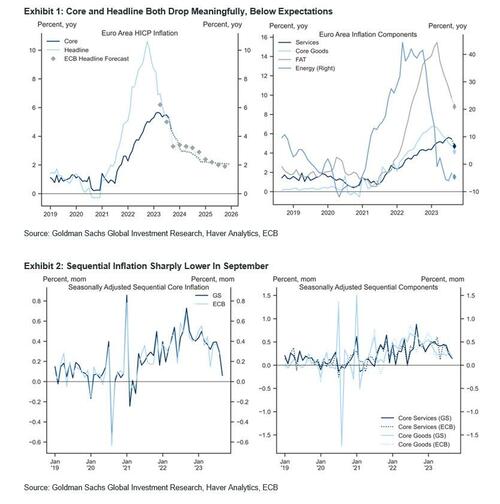“Do You Understand What We Are Saying?”
By Teeuwe Mevissen, Senior Macro Strategist at Rabobank
The Federal Reserve’s ability to influence the economy depends on whether “people understand what we are saying,” according to Fed Chair Jerome Powell. So did market participants not understand what the Fed was saying for quite some time? Or, more likely, did markets simply not believe the Fed’s narrative for a long time? Looking at yesterday’s sharp movements that seems to be pointing more in that direction. Indeed, yesterday saw markets being confronted with nothing less than a bond sell off. This all despite data that showed that inflation in Europe decreased further and even came out lower than expected. Many reasons for yesterday’s moves were given.
Some pointed towards the oil market where dwindling stockpiles and fears of falling crude supplies globally fanned inflation fears. Others mentioned the looming government shutdown in the US, which our US and Fed strategist Philip Marey has covered for you in his latest special and which can be found here. For those who want the very brief summary. It looks like the government is going into a government shutdown on Sunday. The main reason for that being divisions within the GOP between the House Freedom Caucus and the rest of the Republicans. Then some ‘blamed’ hawkish central bankers like Kashkari and Nagel who clearly left open the possibility for more rate hikes. Yet others claim that the market has finally woken up to the idea that rates are likely to stay higher for longer. In other words they might finally understand what the Fed has been saying. While all of the above likely had some influence on yesterday’s movements, considering the fact that the fed funds future for December 2024 declined last month, the recent moves can also point to a rise in the term premium, which -unfortunately- is a technical construct and could reflect anything, from liquidity premiums to inflation risk premiums AND uncertainty about future policy rates (which, again, may also include a ‘higher for longer’ acknowledgement by market participants, albeit at a longer projection horizon).
Japan has also been hit by a selloff of its government bonds and those bonds are set for the worst quarterly selloff in two decades. But while these securities have lost about 3% during the third quarter, non-Japanese government bonds have slumped no less than 4.6%. Still, the yield on a 10-year Japanese government bond reached the highest level in 10-years at 0.755%. An important reason is that the Bank of Japan did not raise interest rates yet but this also means that, should the BoJ start raising rates next year, Japanese bonds will be under more pressure.
But whatever the reason or reasons, bond holders took a big hit yesterday with long term European and US yields rising 10 basis points or more. Moreover, the spread between 10 year Bunds and 10-year BTP’s also rose to 200 basis points. Today we see a slight reversal in bond yields bringing down both the 10-years EUR swap and the German 10-year bund with 5 basis points at the moment of writing. This brings the yields to 3.40% and 2.87% respectively. Some dovish leaning comments and news about a possible encounter between Biden and Xi seem to have done the trick. Also stocks are recovering a bit today, which is the last trading day of a disappointing third quarter for stock markets.
Today also saw a slew of data coming from Japan. Today’s inflation data showed that inflation was slightly higher in YoY terms than expected (2.8% vs 2.7% expected) while core inflation came out slightly lower than expected. Ex-food inflation stood at 2.5% YoY but ex-food and -energy prices rose 3.8%, meaning that the underlying rate of inflation is still well above 2%. August retail sales also went up 7% YoY although compared to the previous month of July, retail sales only rose with 0.1%. Industrial production remained unchanged compared to the previous month but on an annual base it still reported a decline of 3.8%.
This morning also saw a lot of data coming in from the United Kingdom. Second estimates regarding economic growth over the second quarter of this year showed some interesting revisions. While QoQ GDP growth was still estimated to be 0.2%, the annual growth figure was revised upwards from 0.40% to 0.60%. And while consumption and government spending where lower than initially reported, business investments showed a surprising acceleration rising 4.1% compared to the first quarter of this year. Finally, Germany saw some disappointing retail sales figures showing that consumers spent 1.2% less compared to last month and 1.09% less compared to a year ago. This all reflecting the difficult economic position that Germany finds itself in, the result of a long era of erroneous policies regarding trade, energy and security.
Tyler Durden
Fri, 09/29/2023 – 11:40
via ZeroHedge News https://ift.tt/FI7xV0X Tyler Durden
